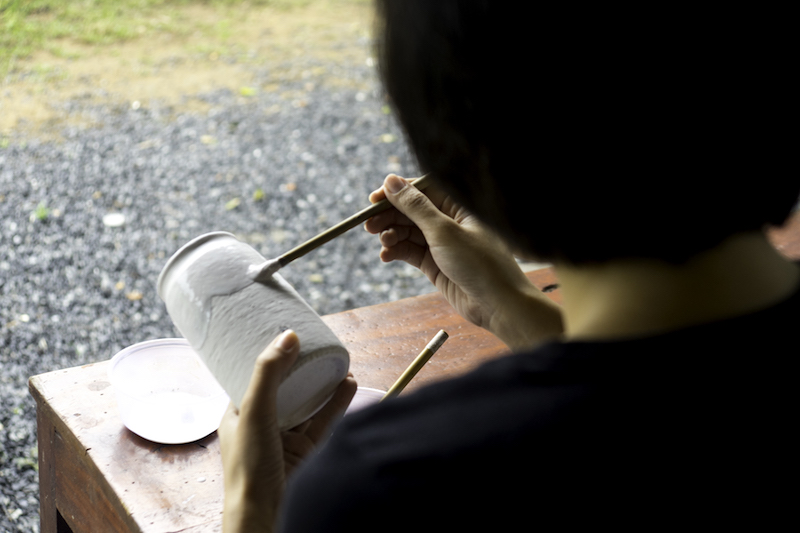A day of unpredictable and exciting results with raku firing
I arrived to the Dat Pottery (www.facebook.com/datpottery; 093 342 1987) workshop, located of the edge of District 2, on Sunday morning pleasantly surprised by my surroundings. I am in a quaint, open farm-like space and there are already a few people working on their creations. The owner, Dat and teacher, greets me and shows me around. I’m here to try out raku firing, a traditional firing technique that originated from Japan. In raku firing all of nature’s elements are used, earth, fire, air and water. The earth is used to make the pot, then it’s put into a reduction chamber kiln, then plunged into cold water, which halts the firing process. A lovely fact about raku is that its name literally translates as “happiness in the accident.”
Dat tells me that he previously worked in a bank but four years ago decided to leave to follow his passion. Fond of pottery, he learned the trade in Binh Hoa. Raku firing specifically caught his eye and six months ago he started teaching himself the method.

Dat asked me to choose an unglazed pot from a selection and I pick a classic round one. Next comes picking the glaze: white crackle, red copper, lustre, blue or turquoise. At first I am confused because the finished pots on display showed a lot more colors than the five on offer. Dat explains that the kaleidescope of colors I see are the results of the raku firing technique, and that he wasn’t hiding any from me. I am immediately fond of the white crackling glaze, which gives the pot an instant vintage feel, and to keep it simple I choose the red copper to match.
I take a seat at a workbench and begin to apply my two coats of glaze. The glaze dries instantly, it is a fairly quick process because I want to keep it simple and not attempt any patterns. I help myself to coffee and refreshments while I waited for the rest of the group to finish glazing.

I ask Dat what piqued his interest in raku firing. He found raku on the internet, he explains, and became fascinated with the unique method of submerging the crockery in cold water directly out of the kiln without cracking or damaging them. He researched everything, from the type of clay used to the glazes nedded and how to master the technique. It turns out that the clay and glaze were easy to source, however, when it came to finding the right kiln, this was a bigger challenge. So, what do you do when you don’t have enough money to buy a kiln? You build one yourself, of course.
Soon I am called over as our pieces are ready to be placed into the red hot kiln. I carefully look inside after 20 minutes and can see that the matte surfaces on the pots were already starting to have a shine to them. An hour passes and they’re ready to be taken out of the kiln, half of the group is given thick white gloves (I discover why shortly), and as the pots are taken out they’re placed into tin cans and those wearing gloves are told to quickly smother the pots with sawdust. The result is a lot of flames, some fast moving hands and then everything quickly covered with damp newspaper. This is where the chemical reaction from the ash, sawdust and smoke create the final look.

After several minutes, each piece is carefully taken from the ashes and plunged into cold water. I scrub my pot and I am happy with the outcome—a great white crackle with blue trim around the top. As I had chosen red copper this was a surprise but exactly what Dat said would happen— that the colors will vary because of the nature of the process. As everyone is looking at their finished creations I ask Dat if everyone is always happy with their final results.
“Raku means happy and is an adventure, the Raku Workshop is for anyone who really loves pottery and handcrafts and wants to try something really special and unique. After the kiln is open some will feel sad, others happy—all of the feelings you have with raku is what I want the customer to try,” he replies.
Images by Ngoc Tran


